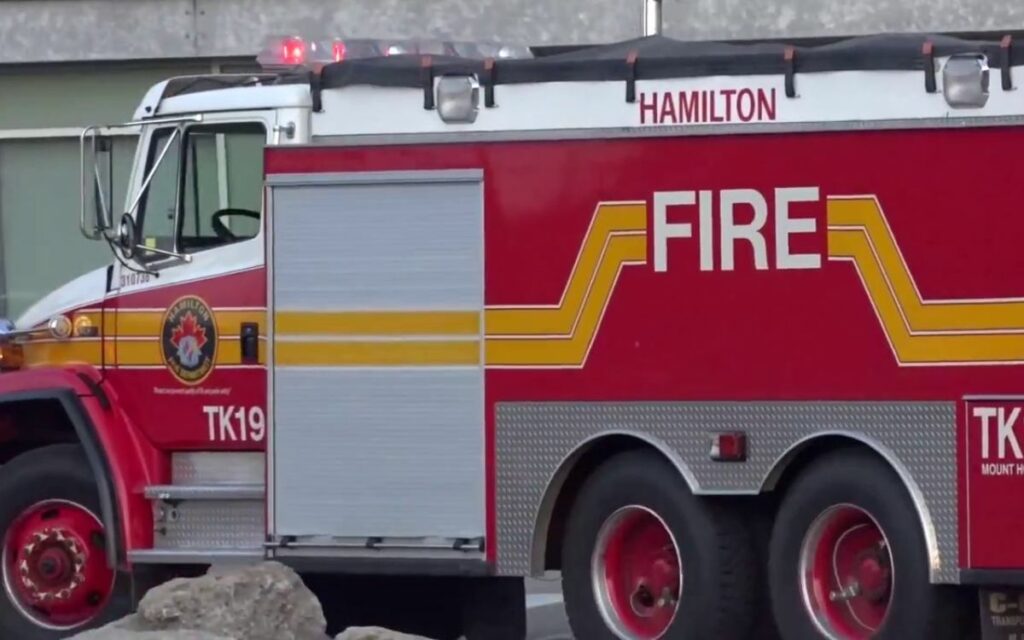
Hamilton Fire Department Chief David Cunliffe proposes a ‘Large-Volume Hazard Storage Database’ to improve emergency response, seeking City Council’s support for detailed tracking of hazardous materials stored in commercial and industrial buildings across the city. Photo Credit: City of Hamilton
In a report to the City of Hamilton’s Emergency and Community Services Committee, Hamilton Fire Department Chief David Cunliffe recommended the creation of a “Large-Volume Hazard Storage Database that will focus on commercial, industrial, and agricultural properties.”
In speaking to Council, Cunliffe said that having a better understanding of the products located within specific buildings across the city would allow the fire department “to do a better job in terms of both emergency response and maintaining fire code restrictions.”
As an added concern, Cunliffe notes that there are a number of industrial areas of the city that are “intertwined with residential,” meaning that some fires have the potential to be particularly catastrophic.
He believes that there are about 2,400 buildings that would need to be visited to create the database.
The report to Council notes that the city has the authority to create a bylaw to require property owners to report to the fire department if they store hazardous materials over a specific volume, but Cunliffe said he did not recommend creation of a bylaw.
Instead, City of Hamilton staff recommended that Council direct Cunliffe to develop and implement this Large-Volume Hazard Storage Database instead.
The fire department would use the Ontario Fire Code as a reference for volumes, storage locations, and types of flammable and combustible substances.
However, the database would require additional city staff to oversee the work.
As a result, Council directed Cunliffe to investigate the staffing and resources that would be required to launch and manage the program which would involve inspections and maintenance of the database.
Council will ultimately have to decide whether they are able to supply the funds required for the database as part of the 2024 budget deliberations.
The report to Council notes that the City of Toronto has a similar program and that any staff that are hired would “borrow from Toronto’s approach where staff have been successful in proactively gathering information from businesses without a by-law.”
It continues, “Toronto conducts proactive site visits focused on industrial properties with their hazmat teams asking owners to share, through a walk-through of the property, what high volumes of hazardous and/or combustible liquids they store.”
“Toronto has been quite successful with property owners sharing this information in the absence of a bylaw.”
The document also details some historical fire-related incidents in Hamilton that somewhat prompted the fire department to push for the creation of a database.
In July 2007, there was a fire at Biedermann Packaging in a warehouse that housed high hazard liquids.
More recently, in August 2022, an agricultural property storing a large quantity of hand sanitizer caught fire taking “longer than average” to extinguish and resulting in $1 million in property damages.
Ultimately, Cunliffe concluded, while no system is “foolproof” a database would give the fire department “the opportunity to have a lot more information, a lot more knowledge and to be able to do more pre-planning from our perspective relative to the emergency response.”

Based in Hamilton, he reaches hundreds of thousands of people monthly on Facebook, Instagram, TikTok, and Twitter. He has been published in The Hamilton Spectator, Stoney Creek News, and Bay Observer. He has also been a segment host with Cable 14 Hamilton. In 2017, he received the Chancellor Full Tuition Scholarship from the University of Ottawa (BA, 2022). He has also received the Governor General’s Academic Medal. He formerly worked in a non-partisan role on Parliament Hill in Ottawa.


















